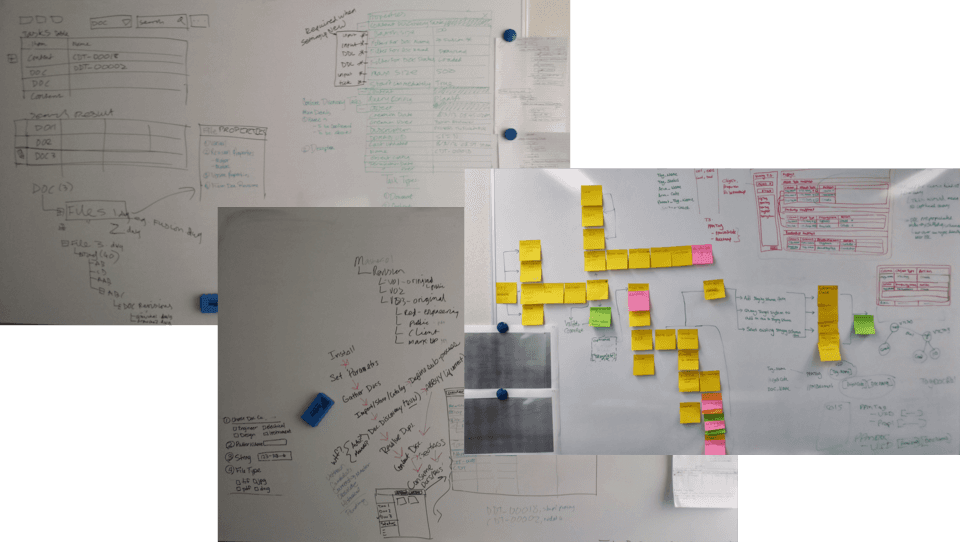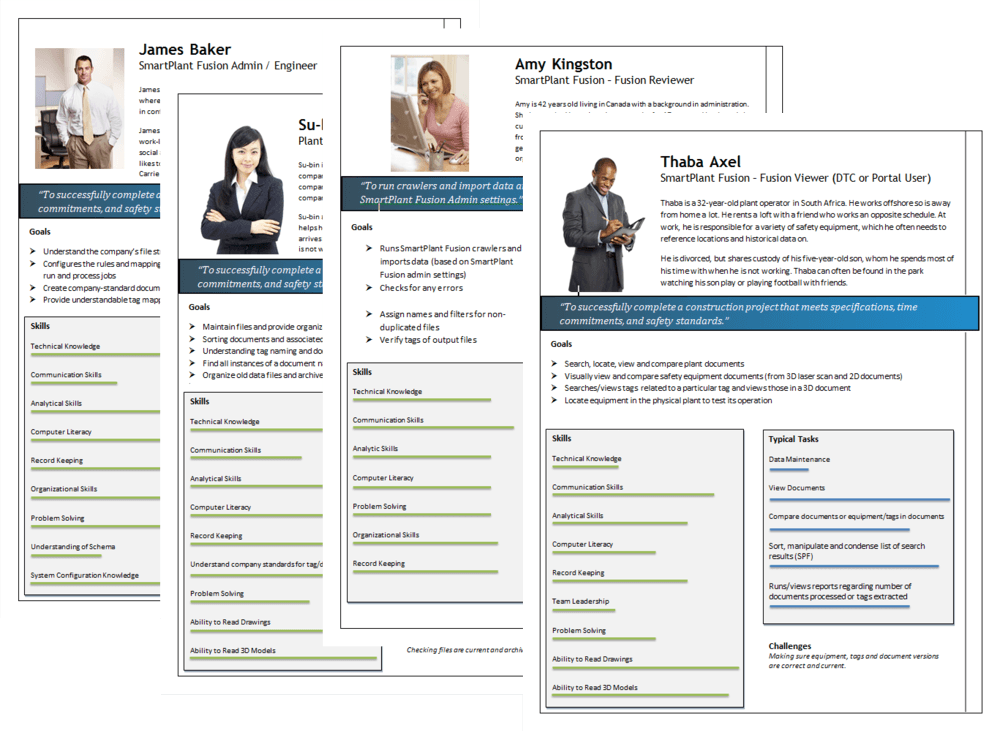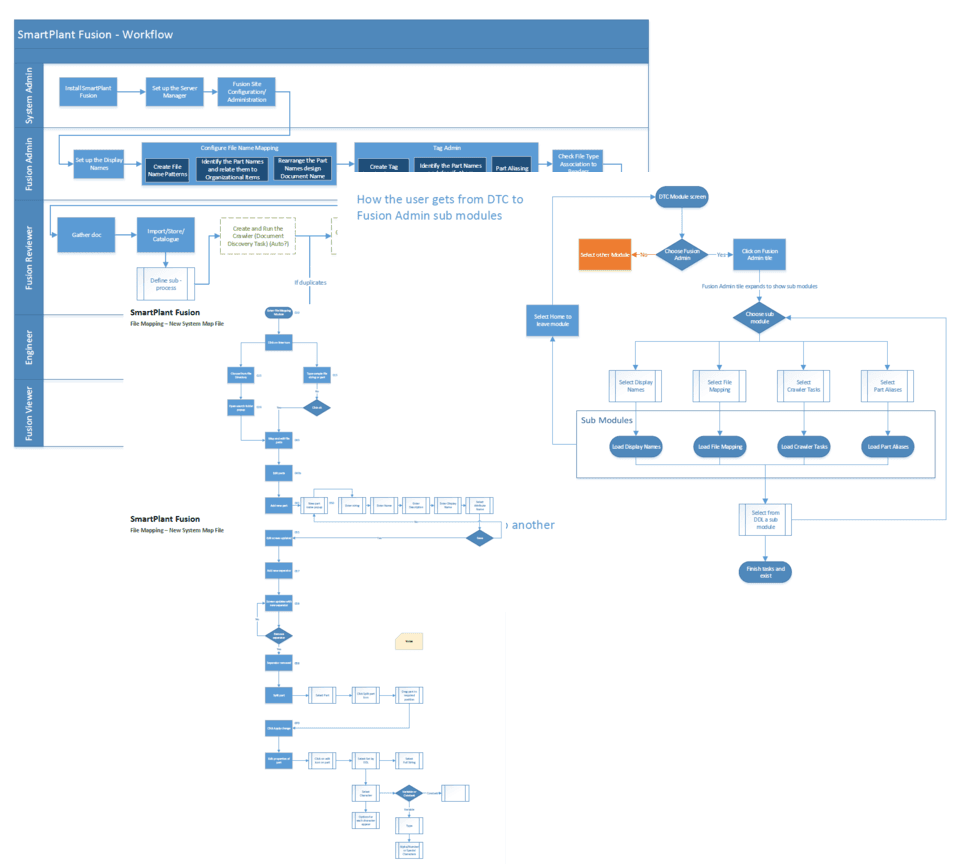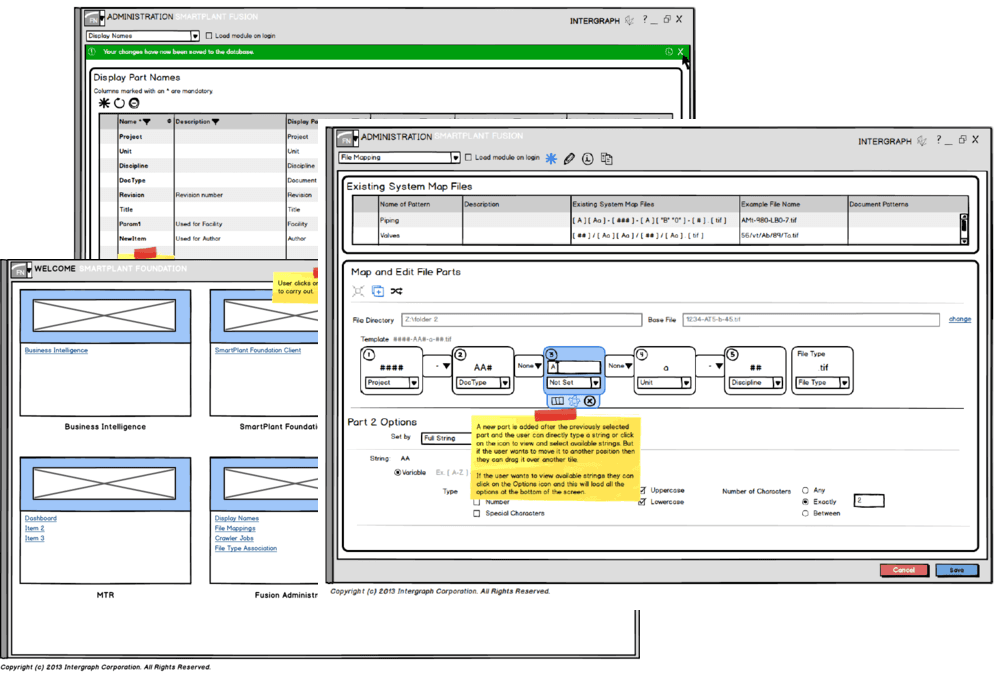Project 3 – Fusion
Business Case
The current way of importing millions of objects into a database was slow and often buggy producing many different types of errors. There was no quick easy way to check or correct these errors so a faster better system was required.
My Involvement
I ran a number of different workshops with product owners and key users to find out what are their main pain points, who are the users and how they currently resolve errors. Some of the workshops and interviews were done via WebEx in cases where people were located in different countries. These would be recorded for reference.
I led a team of UX and Visual Designers to come up with personas and a set of tasks each user type did. Then I managed the ideation phase with design and wireframe iterations and presented the designs to different teams that were involved and would be affected by the software. User tested was carried out and updates were made to each task and communicated to development teams around the world.
The whole project was working in an Agile environment with 4 week sprints.
Below are examples of some of the white boarding produced in the workshops.

The output of the workshops was knowing what types of users there were and what their task are. Leading a small team of UX Designers we came up with some personas. The personas below are the ones I worked on. I designed the persona template shared it out with the other designer to keep all personas looking like a suite using the same style and showing details in the same way.

From the personas I worked on the high level workflows for each of the type of users and split the individual tasks of each user to different UX designer to produce task workflows in detail. Below are some of the ones I produced in Visio.

Working from the signed off workflows each designer would work on a particular section/task to produce wireframes in Balsamiq. We would collaborate on a regular bases to make sure we were all being consistent with our patterns and how each task linked to one another. The wireframes would be updated after and change requests we made by key stakeholders and users. In some cases I would request user testing resource of certain tasks. I would work with the tester to produce a test plan and would be a viewer of the tests writing notes. Due to the fact that the tests were done in the US I would watch the tests via WebEx.
If there were any issues, these would be listed and addressed by the relevant UX Designer. We would all work together to sign off all designs and any patterns.

Where there are any new patterns designed these would have to be documented and a pattern document would have to be produced and signed off for the pattern to be produced and used by any development teams.
For this to happen one of the patterns I worked on was to produce way to navigate from the homepage to an individual task within a module/software.
The pattern guide would show:
- What problem the pattern solves
- How to use the pattern
- Why use the pattern
- And examples
Some of the examples would show UI mock-ups.

The product was launched in 2015 and within 3 months won best software design in the in the marine industry, allowing users to drastically save time and reduce errors.
